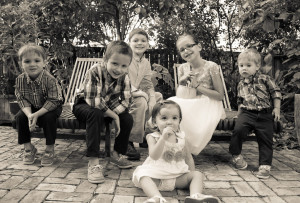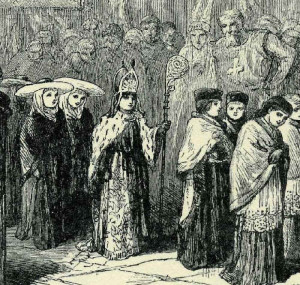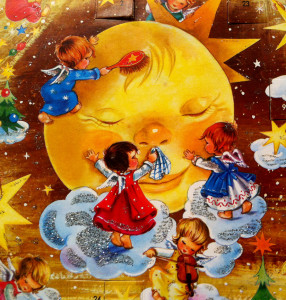THIRD DAY of CHRISTMAS
Holy Innocents Day, Childremas
“Christmas is for children” is something we hear at times, often from older folks who have fallen out of touch with their own sense of wonder. It is a statement with which I heartily disagree. Christmas is for everyone. Nonetheless, here we have a day that has always been devoted to children. It is the Third Day of Christmas, Childremas, or Holy Innocents Day. The Christmas story begins with peace and wonder but quickly turns, for the world has always been threatened by the insecurities of weak people in positions of power. The news of the birth of a king did not sit well with King Herod of Judea, and he ordered the slaughter of all the children of the land. This day honors those children and all children.
In last year’s chapter of the Convivio Book of Days for Childremas, we mentioned the tradition of the Boy Bishop. One of our readers, Kathy Whalen in England, wrote that Manchester Cathedral had recently elected a girl bishop for the first time, the first in the United Kingdom. Well done, we thought! Here’s the tradition, one that goes back to medieval times throughout Europe: a Boy Bishop would be elected at cathedrals each year on St. Nicholas’ Day, the Sixth of December. He was typically chosen from the boys in the choir and for the duration of his reign, which typically ended on Childremas, he wore bishop’s vestments and performed all the duties of a bishop, save for celebrating Mass. In some places, the actual bishop would be obliged to follow the orders of the Boy Bishop, which calls to mind the Feast of Fools, which will be celebrated tomorrow on the Fourth Day of Christmas, when the normal order of things is ceremoniously turned on its head. This melding of Childremas and the Feast of Fools probably is informed by the words of the Magnificat: God has put down the mighty from their throne and has exalted the humble and the meek. On the Third Day of Christmas, typically, the Boy Bishop would be allowed to return to being a child once again (though we noticed the Girl Bishop at Manchester Cathedral last year had to be a bishop all the way to Epiphany!).
One of the oldest traditions for Childremas is the ceremonial exchange of token blows using evergreen branches of birch or pine or rosemary or bay: parents beat their children, children beat their parents, husbands and wives beat each other, and masters and servants exchanged blows, too. The beatings were in good fun and were not at all done with malice or cruelty. Along with the beatings came the words, “Fresh, green, fair and fine! Gingerbread and brandy-wine!” or else, “Fresh green! Long life! Give me a coin!”
Finally, in Spain and Latin America, the Third Day of Christmas is a day for practical jokes, kind of like April Fools Day. The victims of these jokes are known as inocentes, although sometimes it is the prankster that gets that name in a plea for forgiveness. No matter how you spend the day, the theme, it seems, is universal: celebrating and honoring children… and perhaps reconnecting with the child you once were, revisiting the land we all came from. And why not? Tomorrow is the Feast of Fools. Here’s your chance to practice for that.
Image: Seth and I were married, after twenty years together, this past October 26. All our nieces and nephews and great nieces and great nephews played their parts, some carrying flowers, some carrying pumpkins. They are the kids in our lives, and here they all are in this photograph by Charles Pratt.


